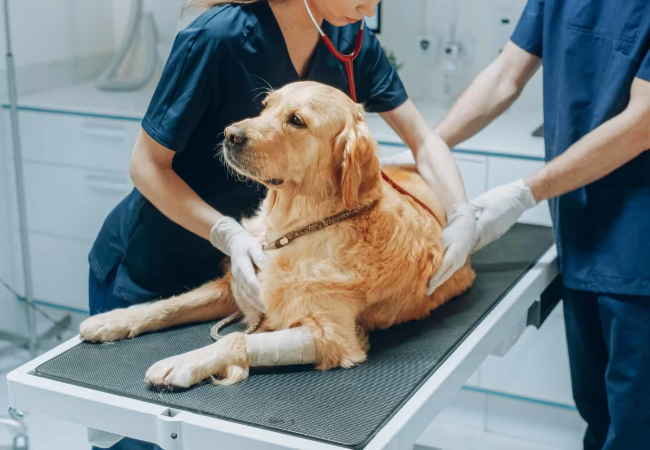Dog Intestinal Blockage in 2025: Vet Backed Guide 🐾🚨

In this article
Dog Intestinal Blockage in 2025: Vet Backed Guide 🐾🚨
By Dr. Duncan Houston BVSc
📌 What Is Hypothermia in Dogs?
Hypothermia occurs when a dog's body temperature drops below the normal range (100.5–102.5 °F / 38–39.2 °C), leading to serious, potentially life-threatening conditions. A body temp under ~99 °F can signal trouble.
🔍 Causes of Hypothermia
- Prolonged exposure to cold, wind, and wet weather
- Immersion in cold water (e.g., falls in ice)
- Poor insulation—small breeds, puppies, seniors, short or thin coats
- Post-surgery or anesthesia-induced heat loss
- Medical conditions causing poor heat production (e.g., shock, hypothyroidism)
👀 Signs of Hypothermia by Severity
- Mild/Moderate: Shivering, muscle stiffness, lethargy, slow movement, pale/cooled extremities (ears, paws), confusion
- Severe: Shivering stops, collapse, fixed/dilated pupils, slow or irregular heart & breath rates, coma
🩺 Diagnosis
- Rectal/core temperature check—below ~99 °F is concerning; below 90 °F is severe
- Physical exam: heart rate, pulse quality, mucous membrane color, and consciousness
- Bloodwork if underlying disease or shock is suspected
🚑 Treatment & Rewarming
- Immediate steps: Move indoors, dry the dog, and wrap in warm blankets
- Passive external warming: Blankets, warm water bottles (wrapped), warming coats
- Active veterinary warming: Controlled heating pads, warm IV fluids, heated oxygen
- Monitor vital signs—stop rewarming once normal to avoid overheating
- Treat underlying issues like frostbite or shock
⚠️ Why Speed Matters
Left untreated, hypothermia can lead to organ failure, frostbite, brain damage, shock, coma, and death. Early warming improves outcomes—even comatose dogs can recover if treated promptly.
🛡️ Prevention Tips
- Limit exposure in cold weather; use sweaters or coats
- Dry immediately after rain, snow, or swimming
- Provide warm bedding, heated pads, especially for puppies, seniors, and short-haired breeds
- Supervise outdoor time; head inside at the first shiver or discomfort
- Ensure proper nutrition and check for underlying health issues annually
📈 Prognosis & Recovery
With rapid and careful rewarming, many dogs fully recover. Severe cases require veterinary supervision due to the risk of frostbite, shock, or organ injury. Long-term effects are rare if treated early.
📞 When to Call Your Vet Immediately
- No response to warmth, collapse, unresponsiveness 🩺
- Signs of frostbite—pale, blistered, or cold extremities
- Severely slowed breathing or heart rate
- Underlying illness (e.g., surgery, shock, cold-water immersion)
📝 Final Thoughts
Hypothermia isn’t just about being cold—it’s a medical emergency. Early recognition and warning save lives. For expert guidance anytime, use the Ask A Vet app 📱.






